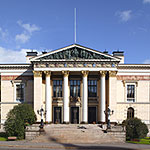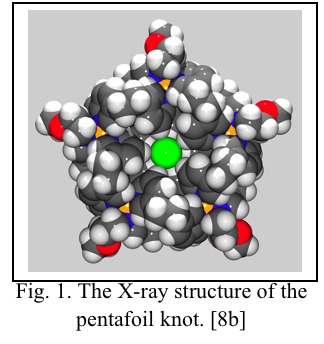References
[1] F. Hof, L.S. Craig, C. Nuckolls, J.
Rebek Jr, Angew. Chem. Int. Ed. 2002,
1488.
[2] a) G.R. Desiraju
Nature, 2001, 397-399. b) T. Steiner,
Angew. Chem. Int. Ed. 2002, 41.
[3] N. Kodiah Beyeh, M. Cetina, K. Rissanen, Cryst. Growth Des. 2012, 4919.
[4] a) K. Raatikainen, K. Rissanen, Chem. Sci. 2012, 1235.
b) K. Raatikainen, K. Rissanen, CrystEngComm
2011, 6972. c) P. Metrangolo, Y.
Carcenac, M. Lahtinen , T. Pilati, K. Rissanen, A. Vij, G. Resnati, Science 2009, 1461.
[5] a) H.
Mansikkamäki, M. Nissinen, K. Rissanen, Angew. Chem. 2004,
1263. b) H. Mansikkamäki, S. Busi, M. Nissinen, A. hman, K. Rissanen, Chem. Eur. J. 2006, 4289.
[6] S.S. Zhu, H. Staats, K. Brandhorst, J. Grunenberg,
F. Gruppi, E. Dalcanale, A. Lützen, K. Rissanen, C.A. Schalley, Angew. Chem. Int Ed. 2008, 788.
[7] a) M. Giese, M. Albrecht, T. Krappitz, M. Peters,
V. Gossen, G. Raabe, A. Valkonen, K. Rissanen, Chem. Comm. 2012, 9983. b)
M. Albrecht, C. Wessel, M. de Groot, K. Rissanen, A. Lüchow A, J. Am. Chem. Soc. 2008, 4600.
[8] J.
Bunzen, J. Iwasa, P. Bonakdarzadeh, E. Numase, K. Rissanen, S. Sato, M. Fujita,
Angew. Chem. 2012, 3161. b) J.-F. Ayme, J. E. Beves, D. A. Leigh, R. T.
McBurney, K. Rissanen, D. Schultz, Nat.
Chem. 2012, 15. c) W. Meng, B.
Breiner, K. Rissanen, J. D. Thoburn, J. K. Clegg, J. R. Nitschke, Angew. Chem. 2011, 3479. d) P.
Mal, B. Breiner, K. Rissanen, J. R. Nitschke, Science 2009, 1697.




